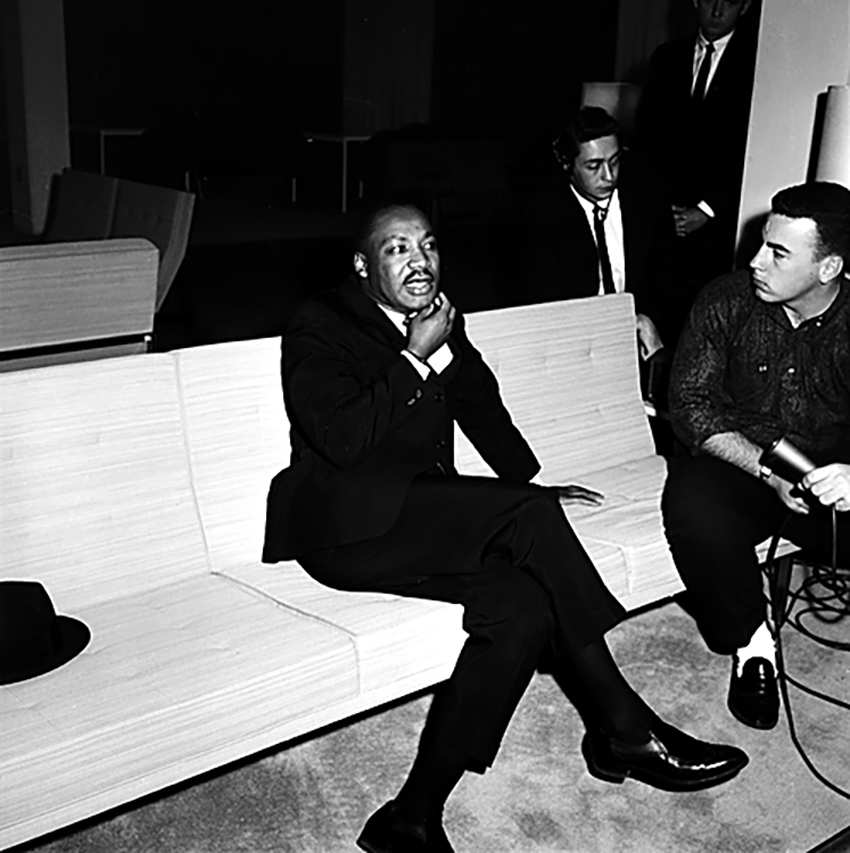Today marks 50 years since civil rights activist Martin Luther King Jr. was shot and killed while at a hotel in Memphis, Tennessee. Half a century later, some black 1960s alumni and Austin activists remember King’s impact on UT and the city of Austin.
While many remember King for his famous “I Have a Dream Speech” at the historic March on Washington, few know that King once made an appearance on the 40 Acres and gave a speech at the Texas Union building on March 9, 1962.
“It was an experience I will never forget,” said Lonnie Fogle, who heard King’s speech in person. “He really preached about nonviolence and about taking a stand. It was quite an experience seeing him on campus.”
Fogle, a 1966 chemistry graduate, was among a group of the first black students to attend UT, today called the Precursors. In 1962, the black student population at UT made up one percent of the student body, with only about 200 black students out of 20,000 total, according to the Austin American-Statesman.
In 1962, it had only been 12 years since the first black student was allowed on campus, and dorms and athletic teams were still segregated.
Fogle said he remembers King’s speech in the Texas Union’s ballroom being packed with students and members of the UT community.
“Whenever a black student walked in to find a seat, a white student in the front would get up and let them have it,” Fogle said.
About 1,200 people attended the speech, titled “Civil Liberties and Social Action.” King made the front page of March 11’s Daily Texan, with a headline that read “Capacity crowd hears King slam segregationists.”
After hearing King’s speech, Fogle said he became more involved in the civil rights movement.
“I was involved in many protests, like the ones at the Varsity movie theatre, and I did sit-ins at lunch counters,” Fogle said. “After I graduated, I became the vice president of the Austin (National Association for the Advancement of Colored People).”
Judge Harriet Murphy, a 1969 graduate of the UT School of Law, grew up in Atlanta and knew King personally. Murphy said she met King at Booker T. Washington High School in the 1940s.
“We didn’t call him Martin Luther, we called him ‘M.L,’ and that’s what I called him his entire life,” Murphy said. “He was one of the most down-to-earth people that you would want to meet.”
While in high school, Murphy said King wrote an essay for the 1944 yearbook about the inequalities of black people in America.
“He was very conscious of the time in which we lived,” Murphy said.
After high school, Murphy said she would frequently run into King while passing through the Atlanta airport and attended a few events with him. When King was assassinated in 1968, Murphy was at UT.
“When he died, blacks were marching to the (Texas) Capitol, so I joined them,” Murphy said.
King was inspirational in getting others to join the movement and fight for justice, Murphy said.
“All of us who were his friends were influenced by his struggle for equality,” Murphy said. “I have spent part of my life trying to make changes.”
Another person who was inspired by King’s mission was Freddie B. Dixon Sr., who played a role in the naming of what is known today as Martin Luther King Jr. Boulevard.
Dixon, a member of the community activist organization Austin Black Assembly, said they worked to rename the street because they felt King deserved recognition after his death.
“MLK streets are mostly found in African-American neighborhoods, and we wanted to show the real essence of King’s mission,” Dixon said.
Before 1975, MLK Jr. Blvd was 19th Street. Dixon said they chose this street to rename after King because it stretched across both sides of Interstate 35, which was historically a boundary between predominantly white and black neighborhoods in Austin. The boundary’s effects are still seen today.
“We faced some opposition from the community, but the street stands a testament of the inclusiveness that King represented,” Dixon said. “The street connects the black and white communities of Austin and represents everything King stood for.”
Today, 50 years since his death, the street named after King stretches through the UT campus, a statue of him stands on the 40 Acres and his message remains within the community.





















